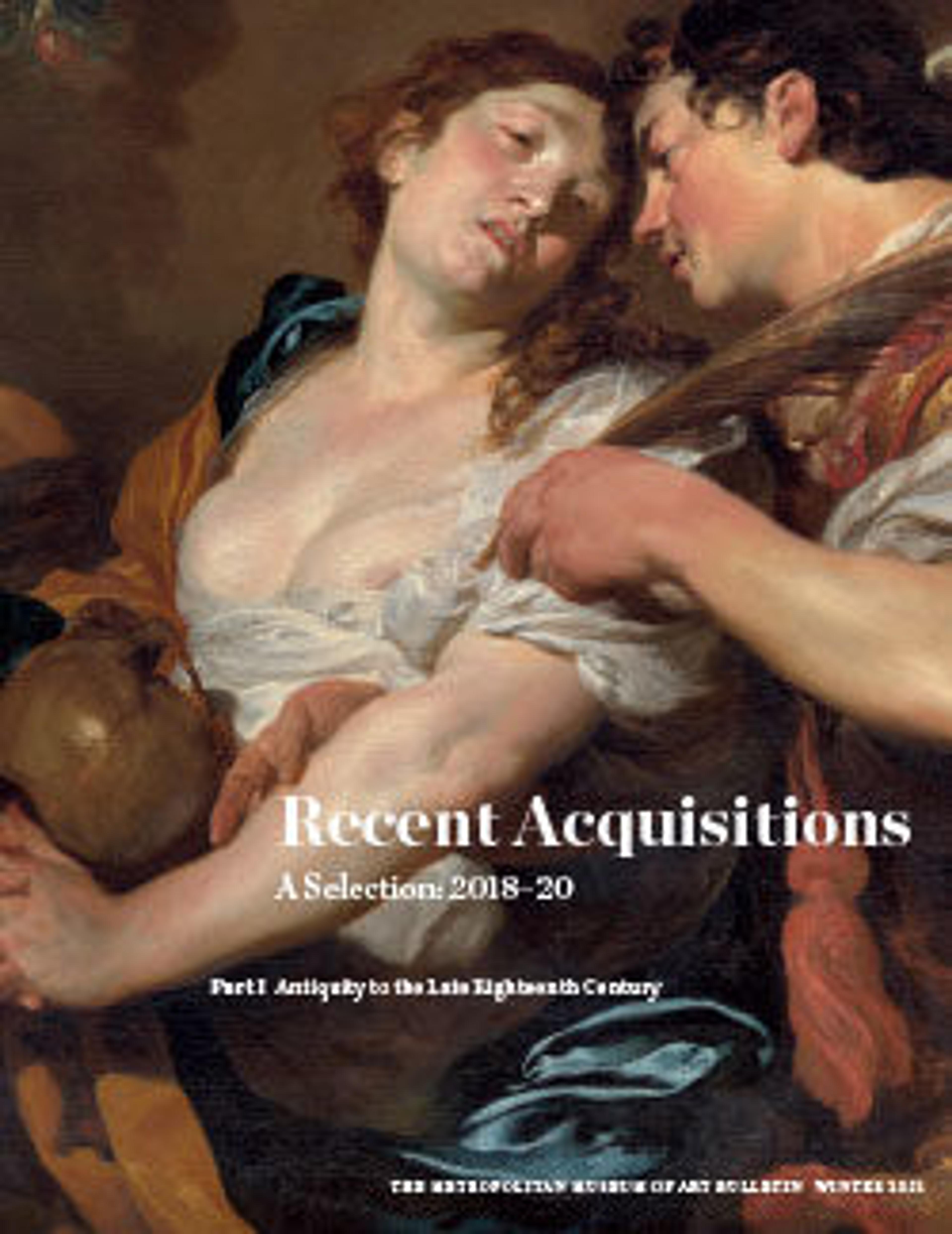Trompe de chasse "Dauphine"
This elegant form of the hunting horn was given the name “trompe Dauphine” because it was adopted as the official hunting horn of the French court the year the Dauphin, future King Louis XV, was born. Horns like this were central to the elaborate and famed hunt at Versailles. The long tube length of the trompe Dauphine (16 foot D) could produce at least 16 notes of the harmonic series, which enabled huntsmen to play a repertoire of intricate calls to keep members of the hunting party apprised of events unfolding in the field. The trompe was also played to entertain listeners before and after the hunt. The sophisticated design and melodic capabilities of these French instruments gave rise to the development of the horn as a musical instrument. Because of the importance of the hunt as a reflection of wealth and noble status, stylized horns were often employed as decorative motifs (see 07.225.147, Louis XV interior)
This large brass hunting horn is wrapped in typical circular form with its body tubing coiled 2 ½ times and secured to the bell and mouthpiece receiver with double sets of folded braces. Anecdotal sources suggest that horns with these duplicate sets of braces were reserved for the lead huntsman. The bell has a single, wedge-shaped gusset, indicating that two separate sheets were used for its manufacture. Longitudinal burnishing marks are visible on the bell section, revealing how the piece was worked on a mandrel. The bell interior has been painted black (a recent restoration in imitation of the instrument’s original finish), as is typical with hunting horns so that the bright metal does not “dazzle” horses and quarry in the sun. The bell garland is stamped with a repeating pattern of fleurs-de-lis, place of manufacture, and the maker’s name: FAIT A PARIS PAR/CRETIEN ORDINAIRE DV ROI.
This large brass hunting horn is wrapped in typical circular form with its body tubing coiled 2 ½ times and secured to the bell and mouthpiece receiver with double sets of folded braces. Anecdotal sources suggest that horns with these duplicate sets of braces were reserved for the lead huntsman. The bell has a single, wedge-shaped gusset, indicating that two separate sheets were used for its manufacture. Longitudinal burnishing marks are visible on the bell section, revealing how the piece was worked on a mandrel. The bell interior has been painted black (a recent restoration in imitation of the instrument’s original finish), as is typical with hunting horns so that the bright metal does not “dazzle” horses and quarry in the sun. The bell garland is stamped with a repeating pattern of fleurs-de-lis, place of manufacture, and the maker’s name: FAIT A PARIS PAR/CRETIEN ORDINAIRE DV ROI.
Artwork Details
- Title: Trompe de chasse "Dauphine"
- Maker: Cretien workshop, Paris (c.1690 – post 1737) (French)
- Date: ca. 1700
- Culture: French
- Medium: Brass
- Dimensions: Small bell (28.5cm diameter) and a large three and a half turns body (inside diameter 50.0cm)
- Classification: Aerophone
- Credit Line: Purchase, Anonymous Gift, 2020
- Object Number: 2020.3
- Curatorial Department: Musical Instruments
More Artwork
Research Resources
The Met provides unparalleled resources for research and welcomes an international community of students and scholars. The Met's Open Access API is where creators and researchers can connect to the The Met collection. Open Access data and public domain images are available for unrestricted commercial and noncommercial use without permission or fee.
To request images under copyright and other restrictions, please use this Image Request form.
Feedback
We continue to research and examine historical and cultural context for objects in The Met collection. If you have comments or questions about this object record, please contact us using the form below. The Museum looks forward to receiving your comments.
